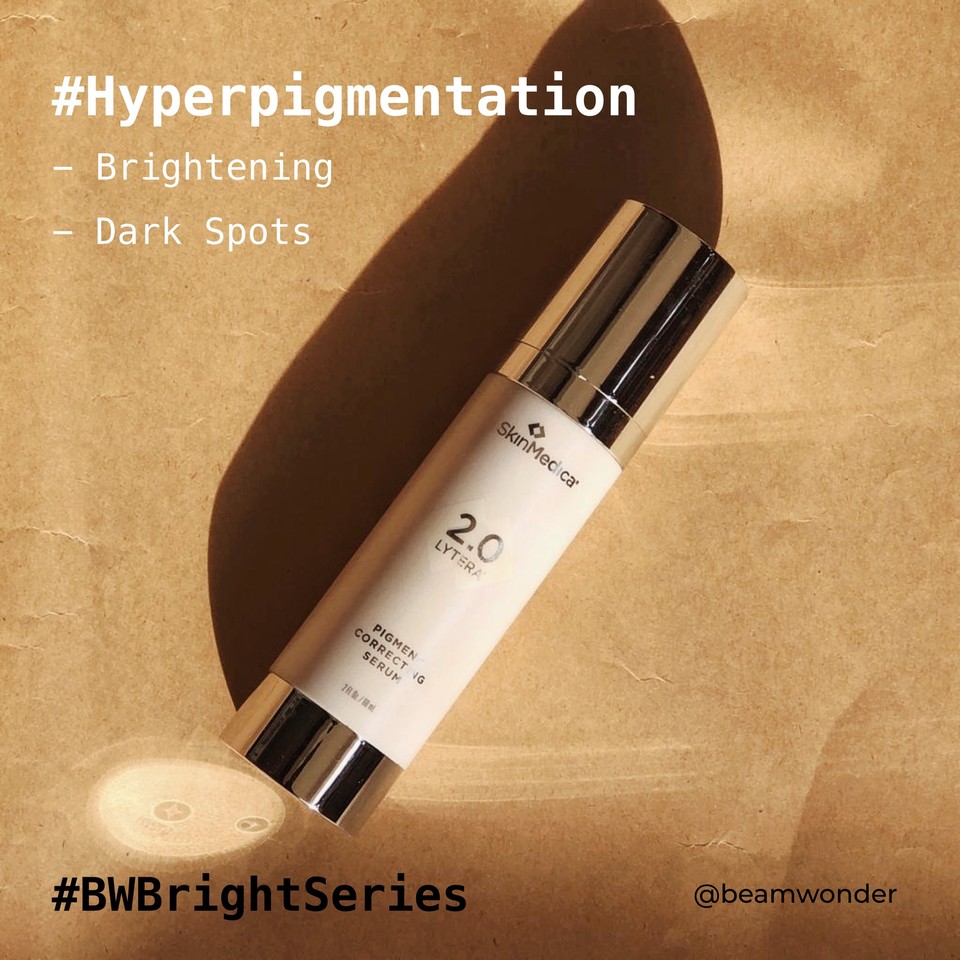
@skinmedica Skin Medica Lytera® 2.0 Pigment Correcting Serum Review #bwbrightseries#beamingredients
Rating 4.2/ 5
Oh my goodness, this review is long overdue after two bottles of Lytera and about 3 small sample bottles here are my thoughts:
✅What is it? Pigmentation Corrector Serum brightens and tackles specifically dark spots and hyperpigmentation issues.
✅Texture – Slightly sticky, tacky white cream.
✅Price – 154$ (50ml) in an airless pump.
✅Suitable for – All skin types and tones (if you are pregnant it’s always worth checking with your GP first)
✅Pros – This is an updated version from 1.0 where retinol was removed, it also has no AHA, no hydroquinone, no salicylic acid so very easy to adopt into your routine. Great for people who cannot tolerate Hydroquinone too (which is the usual prescribed treatment by most US dermatologists).
Key Ingredients:
📝Before we go into ingredients let me just quickly add: In order for pigmentation serums to be effective in tackling hyperpigmentation issues most will contain a list of potent Tyrosinase Inhibitors (“Tyrosinase is a copper-containing enzyme present in plant and animal tissues that catalyzes the production of melanin and other pigments from tyrosine by oxidation”, think of that sliced apple turning brown experiment. These inhibitors will be key to turning around discolouration marks on the skin.
📝The star of the show is the much talked about Tranexamic Acid – In 2014 It was discovered that Oral Tranexamic Acid had positive results for the Treatment of Melasma ( Bala et al 2018) with topical tranexamic acid being a promising treatment for melasma (Bahareh et al 2014). In this study, the authors show how it is just as effective at dealing with melasma as ”3% hydroquinone + 0.01% dexamethasone”.
✏️Phenylethyl Resorcinol- An active tyrosinase inhibitor preventing the synthesis of melanin in the skin improving uneven skin and reducing discolourations.
✏️Niacinamide – Proven to work against hyperpigmentation at 5% (Bissett and Berge, 2005)
✏️Tetrapeptide-30– an anti-inflammatory peptide that prevents melanin synthesis by preventing the activation of the enzyme tyrosinase to help balance skin tone.
✏️Phytic Acid- a great alternative to AHA for gentle exfoliation action
🏆Experience: From a lot of pigmentation serums this has to be one of my top favorites. The first thing that catches my eye is that there is no AHA/Retinoid which means you can use it day and night.
🏆Results: I noticed good lightening in new scars, without the typical irritation of using a high % acid which to me is awesome, it is also gentle so there is no stinging. New pigmentation marks will fade quicker with this but for older, deeper-rooted melasma the shift was much much more subtle. Even after using this for 1 year on one dark spot I noticed it did not fade and that is because not all pigmentation is created equally (I will have to do a separate post on this).
🏆What I love about this serum is that it does not have any AHA/BHA and retinoids this means you can pair it up with a good strength separate retinoid product to accelerate the results, it can also be used as an alternative to Hydroquinone or used after a course of Hydroquinone (to prevent the return of melasma and dark spots) or laser treatments.
✅Cons: I think if there were any cons for me it would have to be the texture, it is thicker than I had imagined at first and a bit sticky. The stickiness was more tolerable when I used this in the UK (colder climates) but is not so pleasant in humid environments. However, to be honest for an effective product I am happy to suffer a little stickiness. 👏Recommendation: Yes I would definitely recommend this! however please be patient especially if you have darker skin tones and to truly see a good shift pigmentation I would say I expect to use this for at least 3-4 months minimum. If your pigmentation is around the hormonal areas (mouth) then expect this to work at an even slower pace.
A review on Skinceuticals Discolouration defense and Evenbetter Eventone to follow soon (I just need to write up my notes on these.)
